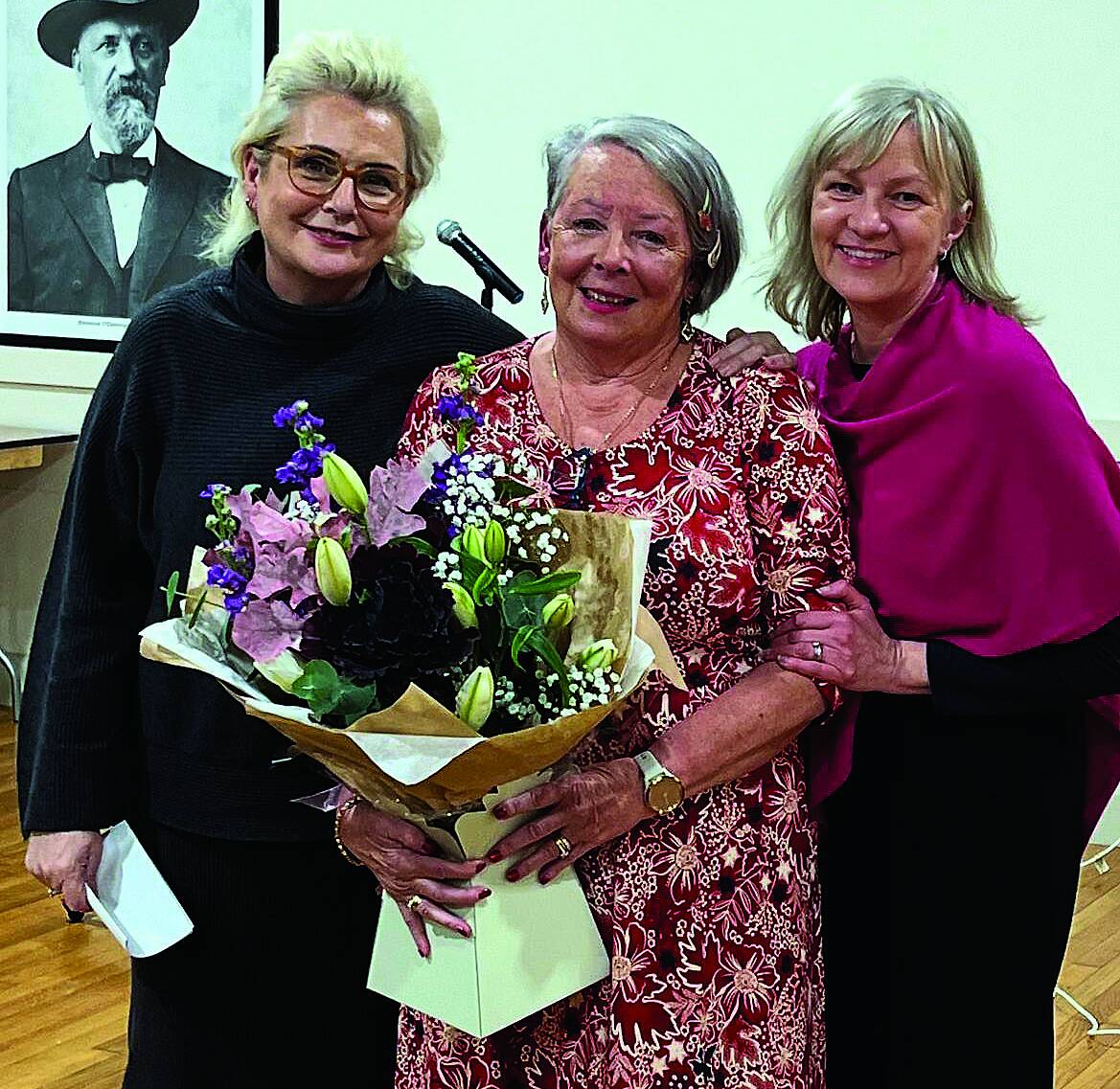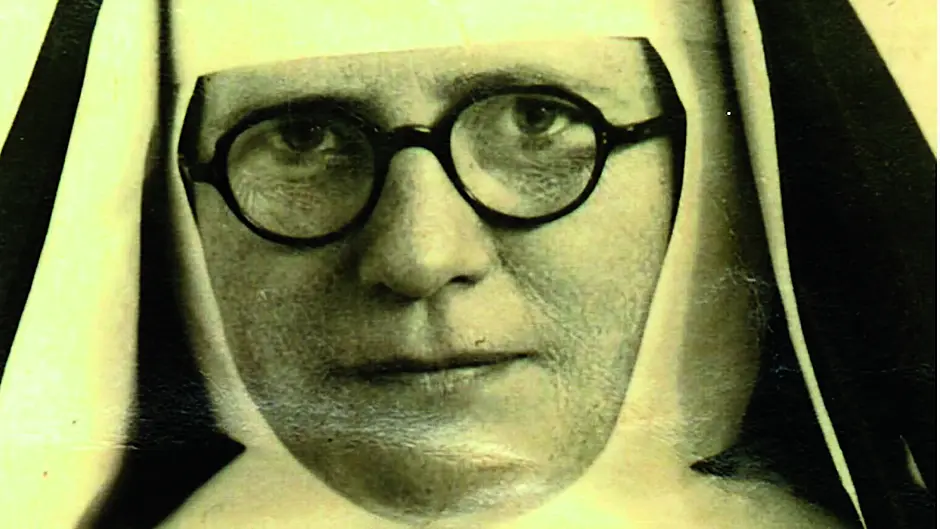The remarkable story of West Cork nun St Kate McCarthy is told in a fascinating new book on her heroics in the Second World War, writes Emma Connolly.
A NEW book tells the incredible story of a Drimoleague nun who set up a resistance group in World War II before being captured by the Gestapo, enduring 13 months in solitary confinement, and four brutal years in a concentration camp, where she cheated death on countless occasions.
From Rebel County to Ravensbrück Camp: The Remarkable Story of Kate McCarthy, is written by retired primary school teacher, historian Catherine Fleming.
 Caitriona Hayes, grand niece of Sr Kate; writer Catherine Fleming and Clare McCarthy, grand niece at the recent book launch. in O’Donovan Rossa GAA Club in Skibbereen.
Caitriona Hayes, grand niece of Sr Kate; writer Catherine Fleming and Clare McCarthy, grand niece at the recent book launch. in O’Donovan Rossa GAA Club in Skibbereen.
‘Kate McCarthy had the courage to say “no” to an evil regime and faced the consequences bravely. She never gave up hope of survival. I wanted everyone to know her story – how she saved over 200 British soldiers – which is revered in Béthune and Paris and yet here, is virtually unknown,’ said Celbridge-based Catherine.
Born in 1895 in Driminidy North, Drimoleague, she described Sr Kate as a ‘proud Cork woman with a deep faith. She always believed in doing the right thing. This she did with courage, loyalty, and persistence.’
In 1913, Sr Kate joined the order of the Franciscan Sisters of Calais and was transferred to Béthune in northern France, where she worked in a hospital. Along with two other women, she set up a successful Resistance group in Béthune in May of 1940.
As the group grew in confidence, they joined an important Resistance group in Paris called The Musée de l’Homme. Unknown to all, they had been infiltrated by a traitor and spy.
‘Captured by the Gestapo in her hospital in Béthune in June 1941, Sr Kate spent 13 months in solitary confinement awaiting trial. Tried in Lille in July 1942, Kate and her friends received the death sentence for being an enemy of the Reich by assisting British prisoners and for espionage. The previous December, Hitler had introduced a new decree called “Night and Fog” by which prisoners, like Kate would simply disappear.
Over the next two years Kate, and the other two women were moved by the Nazis from prison to prison. However, the women, at risk of death, never stopped resisting during their daily 12 hours of slave labour. Finally, on a dark November morning in 1944, Kate found herself being roughly marched from Fürstenberg station to Ravensbrück Camp for women, known as “The Hell for Women”,’ said Catherine.
Here, the West Cork woman struggled against almost insurmountable odds: starvation, beatings, illness, and the inevitable selection for the gas chamber.
She survived typhus and four harrowing selections for the gas chamber.
Finally, on April 25th, 1945, despite being held hostage with other British women, she managed to get onboard the last “White Bus” of the Swedish Red Cross Rescue Mission and was bought to Malmö in Sweden. However, once safe, Kate continued to resist by giving valuable information to the British Intelligence on the camp staff.
‘Kate was nominated twice for the legion of honour medal by one of France’s greatest Resistance leaders, Germaine Tillon. Returning home, in ill health, to her beloved Honan Home in Cork, she became Mother Superior and with great empathy for those she served, continued to lead without ever speaking of her terrible ordeals. Kate’s heart had been damaged from all she suffered at the hands of the Third Reich and she died in her sleep in 1971,’ said Catherine.
Researching and writing the book took Catherine seven years. She first heard about Sr Kate in 2016, when she read a sentence in a military history book by David Murphy that four Irish women were incarcerated in Ravensbrück Concentration Camp for women.
‘My parents both served in the army during and at the end of the war. My uncle was a bomber pilot shot down and killed aged 23. I wanted to find out about these women. Sister Kate McCarthy’s story was unbelievable. Finding her niece Sister Breda McCarthy in Rathfarnham was the start of the research as she gave me a copy of the only interview Kate ever gave. It was to become the heart of all the research,’ said Catherine who said she was also indebted to William Casey of Skibbereen Historical Society and Margaret Murphy of the Heritage Centre for the invaluable help they gave her.
Sr Kate’s grandniece Caitriona Hayes said she is remembered by her family as ‘a quiet gentle lady with presence’.
What inspired her acts of bravery?
‘The McCarthy’s of her generation were known to be resilient people – also her faith helped in her navigating the tough times, I would think,’ she said.
Caitriona said Sr Kate is a source of inspiration to her personally.
‘I pray to her in times of stress and I find huge strength in her courage and determination. We are very proud of her and feel that her heroism will be known far and wide thanks to Catherine’s book.
We are very grateful to Catherine Fleming for her years of dedication in writing the book about our grand aunt.’
Catherine concluded: ‘By showing us, in the 21st century, her courage, her loyalty to friends and comrades, and her unquenchable belief in doing the right thing, Katherine Anne McCarthy from Drimoleague is a guiding light in our difficult times.’
• From Rebel County to Ravensbrück Camp: The Remarkable Story of Kate McCarthy, is available in Field’s SuperValu, Skibbereen, The Bookshop in Skibbereen, Le Chéile in Dunmanway











